Discover The Historic Fortress Of Bhutan Trongsa Dzong In 2026
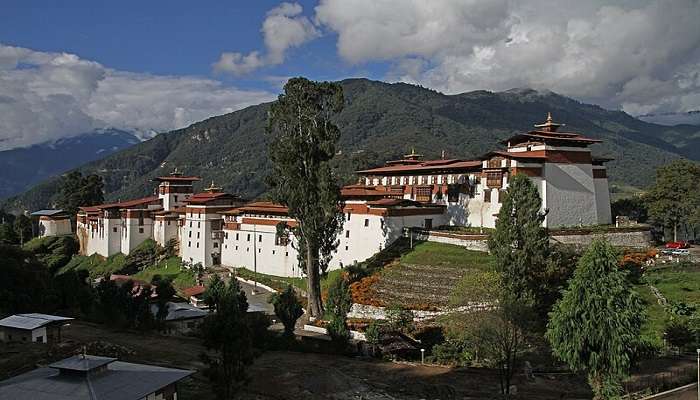
Imagine a fort that is home to the future kings of Bhutan and where they must earn their stripes, a place where legends and royal drama are etched into the bricks. The largest fortress in Bhutan, Trongsa Dzong, is a piece of architecture and a part of the country’s history. Sitting majestically on a cliff over the Mangde Chhu River, this dzong is so crucial to the country’s defence that it used to regulate all the east-west trade in Bhutan. It is said that the great Drukpa Lama Ngagi Wangchuck meditated here in 1541 under the light of a divine lamp to indicate the place for the dzong. When you are still approaching Trongsa, the fortress appears on the horizon, a great and powerful symbol of the past and a call to discover the unknown.
Trongsa Dzong History
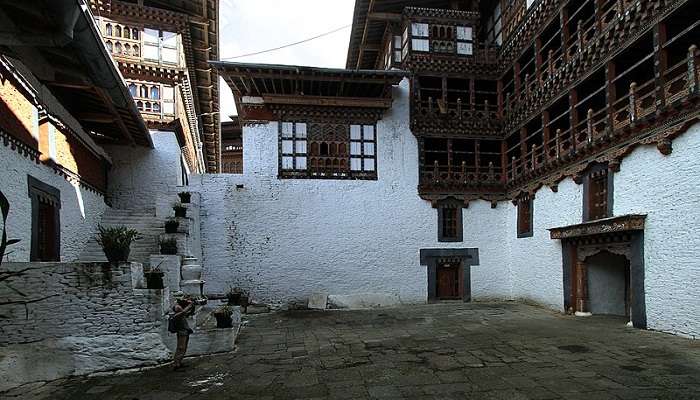
The history of Trongsa Dzong Bhutan is very much associated with the Wangchuck dynasty of Bhutan as the ruling monarchy. Constructed in 1644, it was the palace of the Wangchuck governors before they became kings of Bhutan in 1907. This magnificent fortress was a key point in regulating the east-west trade and was located in the area to control and guard it. The watchtower, Ta Dzong, overlooks the fortress and is now a museum that houses the history of Trongsa Dzong. It has been a symbol of the unification and administration of Bhutan up to the present time.
Must Read: Bhutan Hill Stations
Trongsa Dzong Architecture
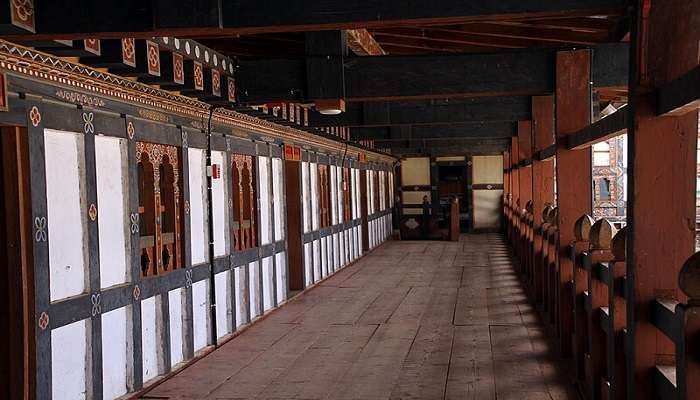
The structure and design of Trongsa Dzong are a perfect representation of the Bhutanese architectural style. The fortress is a complex of buildings that are connected internally. These buildings stand on the slopes of the hill. The corridors are narrow, with stone stairs leading to different temples, offices, and the central courtyard where the Trongsa Tshechu festival is held annually. The location of the dzong was not only defensive but also architectural brilliance in Bhutan; therefore, this dzong is one of the most beautiful dzongs in Bhutan.
Trongsa Dzong Festivals
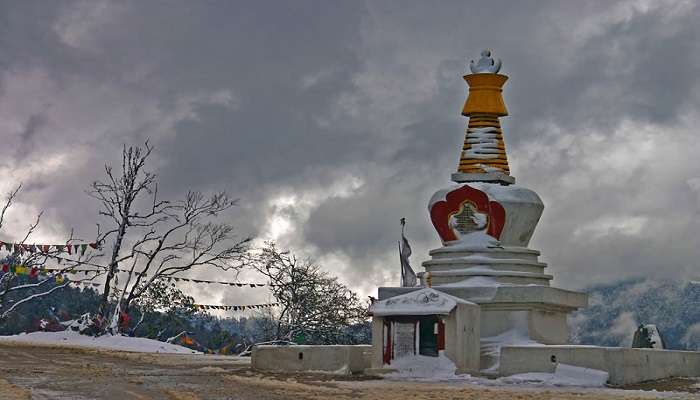
The Trongsa Tshechu Festival is celebrated in December or January and is a colourful event that draws people from all over Bhutan. This five-day festival is characterised by mask dances, cultural shows and the unrolling of a thongdrol, a sizeable religious tapestry. The festival gives a rare opportunity to experience Bhutan’s spiritual and traditional practices with Trongsa Dzong as the backdrop. This event is a must-watch for anyone planning to visit Bhutan, as it gives a sneak preview of the traditions and togetherness of the people.
Suggested Read: Trekking In Bhutan
Trongsa Dzong Timings And Entry Fee
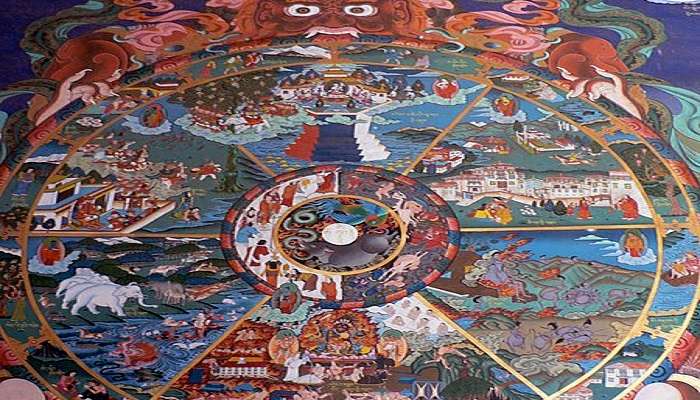
You can plan a tour of the ancient fortress of Trongsa Dzong from 9:00 AM to 5:00 PM from Monday through Sunday. So it is open for visitors 7 days a week. As far as Trongsa Dzong’s entry fee is concerned, there is none. You can visit the fortress free of charge.
Attractions Near Trongsa Dzong
Trongsa Dzong is one of the 5 most prominent Dzongs in Bhutan and is a trip well worth it in itself, but if you are in the area and looking for further adventures, you can check out the following places:
1. Ta Dzong (Watchtower)
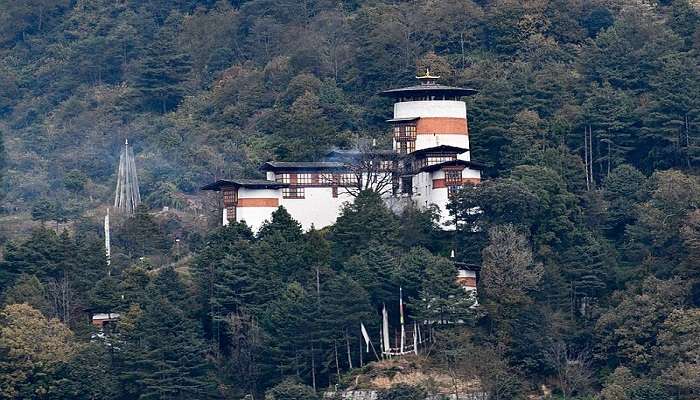
Originally built to protect the fortress from invasions, Ta Dzong is above the Trongsa Dzong. Now turned into the Royal Heritage Museum, it houses a wide collection of Bhutanese art, history, and relics, offering a detailed insight into the country’s cultural history. The most important part of the museum is the chapel, which is devoted to Jigme Namgyal, the important Trongsa Penlop. After visiting Ta Dzong, visitors can get a bird’s eye view of the surrounding terrains and the large dzong below, a must-go area for history lovers and photographers.
Days Needed: 1 day
Entry Fee: Nu 200 for Indians/ Nu 500 for foreigners
Suggested Read: Hiking In Bhutan
2. Kuenga Rabten Palace

Kuenga Rabten Palace is approximately 23 kilometres from Trongsa Dzong and was the second king of Bhutan’s winter home. This magnificent palace gives one a glimpse of how the royals lived and the architectural design of the country in the past. The palace has large halls with carved wooden ceilings, meditation rooms, and beautiful gardens around the castle. The palace also has a gorgeous view of the valley below and the surrounding area, which gives the palace a peaceful and attractive atmosphere that is perfect for history buffs who want to learn more about the royal history of Bhutan.
Days Needed: 1 day
Entry Fee: Nu 300 onwards
3. Chendebji Chorten
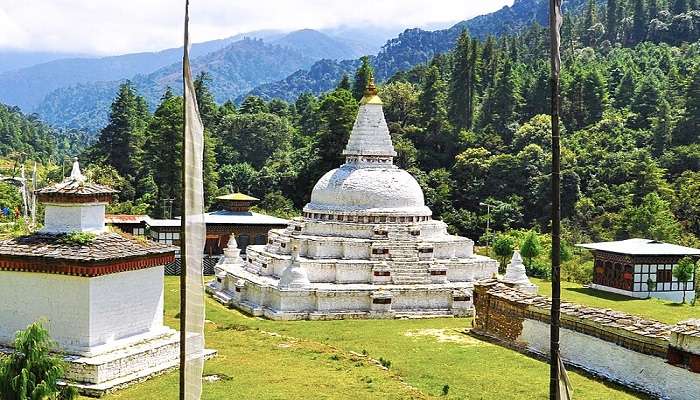
Located 41 kilometres from Trongsa, Chendebji Chorten is a large stupa built in Nepal’s Boudhanath Stupa style. Initially built in the 18th century by Lama Shida, it was designed to tame a demoness that was said to reside in the region. The chorten has eyes painted on all four sides of it, which is a symbol of the all-seeing eyes of Buddha. This place is perfect for meditation and is very quiet, so visiting it when going to Trongsa is spiritually fulfilling. Due to its architecture and surrounding atmosphere, it is visited by pilgrims and tourists alike.
Days Needed: 1 day
Entry Fee: NA
Suggested Read: Bhutan In December
4. Tangsibji Village
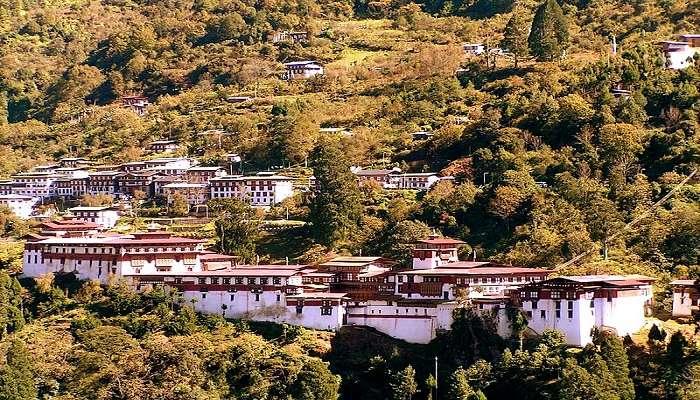
Tangsibji Village, which is only a short drive from Trongsa Dzong, is a great place to get a feel of rural Bhutan. The village is famous for its beautiful terraced fields, typical houses, and friendly population reception. Tourists can walk around the town, communicate with the people, and watch how they live on their farms, which have not changed much for hundreds of years. Tangsibji Village is a beautiful and culturally vibrant place which gives tourists a wonderful feel of rural Bhutan.
Days Needed: 1 day
Entry Fee: NA
5. Trongsa Museum
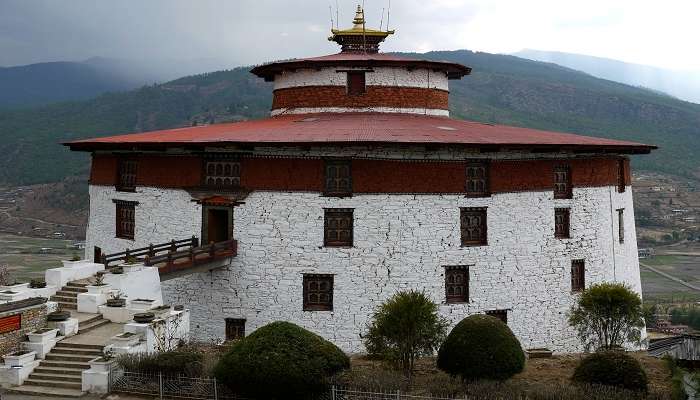
The Trongsa Museum is housed within the premises of Ta Dzong and offers a brief introduction to Bhutan’s history and heritage. The museum contains many exhibits, starting with manuscripts and ending with traditional costumes that reveal the region’s colourful history. It is also essential to have a combination of static and dynamic forms of information presentation, where the static forms include interactive exhibits and detailed displays. The museum not only enlightens but also engages the visitors in Bhutan’s history; therefore, it is a must-visit place for anyone who wants to get a feel of the richness of Bhutanese history and culture.
Days Needed: 1 day
Entry Fee: 300 Nu onwards
Further Read: Tourist Places In Bhutan
Visiting Trongsa Dzong is like stepping back in time and getting a sense of Bhutanese history and culture. Whether you are an avid history lover, an admirer of architectural marvels or a travel enthusiast, a trip to Bhutan is not complete without a visit to this fortress. You can’t hold yourself back from appreciating the grand architecture of this awe-inspiring structure!
For our editorial codes of conduct and copyright disclaimer, please click here.
Cover Image Credit: Gerd Eichmann for Wikimedia Commons
Frequently Asked Questions About Trongsa Dzong
What was Trongsa Dzong's role in the history of Bhutan?
Trongsa Dzong has been the administrative centre of the Wangchuck dynasty, the royal family of Bhutan.
Is there any charge to pay to get into Trongsa Dzong?
No, it was recently announced that entry to the Trongsa Dzong will be completely free of charge.
What are the opening hours for Trongsa Dzong?
The visiting hours of Trongsa Dzong are from 9:00 AM to 5:00 PM in the evening.
How to conveniently reach Trongsa Dzong?
The easiest way to get to Trongsa Dzong is by road transport, although the nearest airport is in Bumthang, about 68 km away.
What is a Dzong in Bhutan?
A Dzong in Bhutan is a fortress-monastery that was considered to be the religious, military, and administrative centre in ancient Bhutan.
People Also Read:
Bhutan In November Bhutan In August Bhutan In April
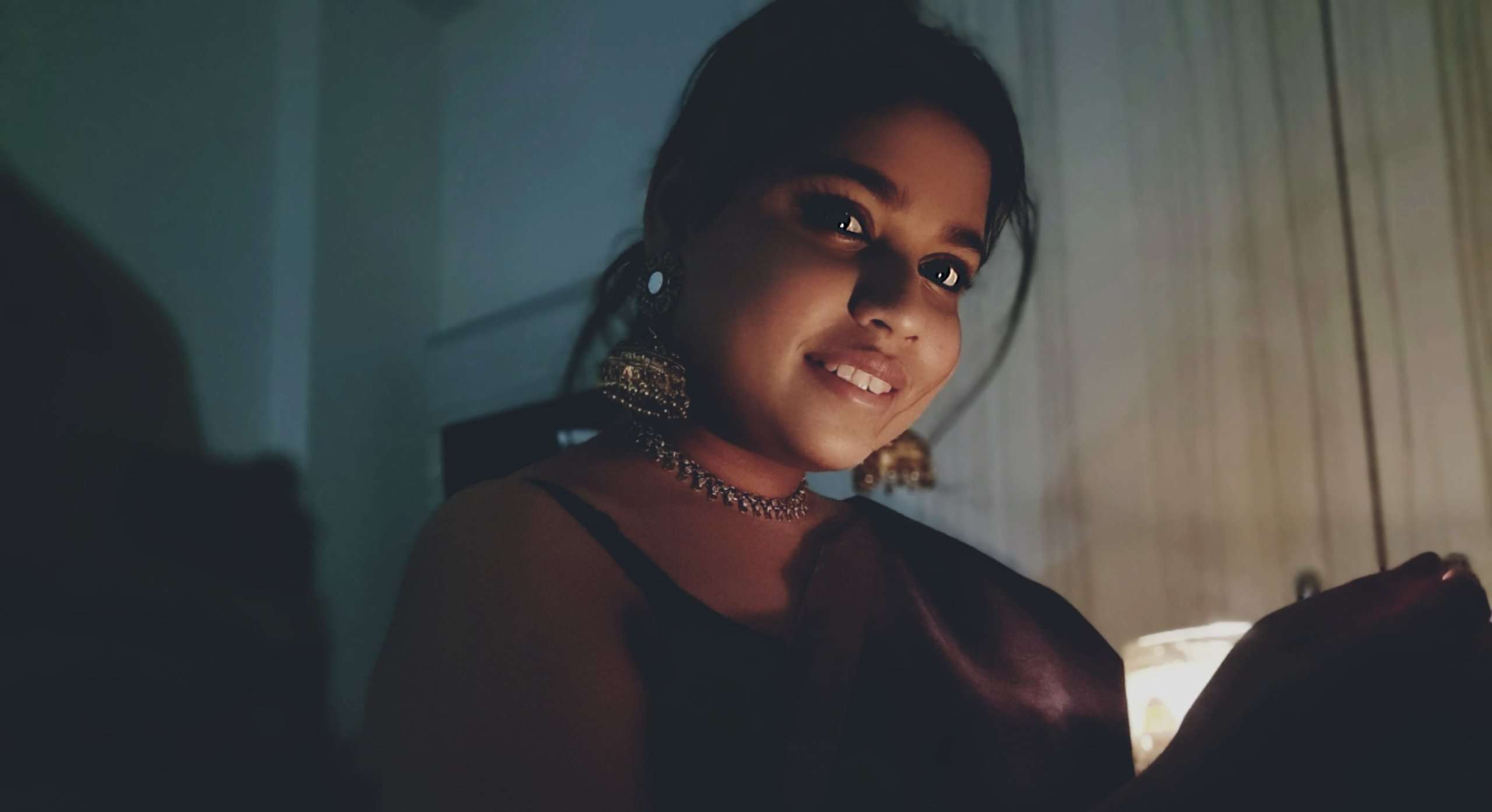
As a Travel Content Writer, I live to conquer the world of globetrotting with words. With my unquenchable thirst for storytelling, I believe that my words will inspire you to travel around the world’s breathtaking landscapes. As for me, I am an unapologetic selenophile, who loves to wander around in a starry night!











